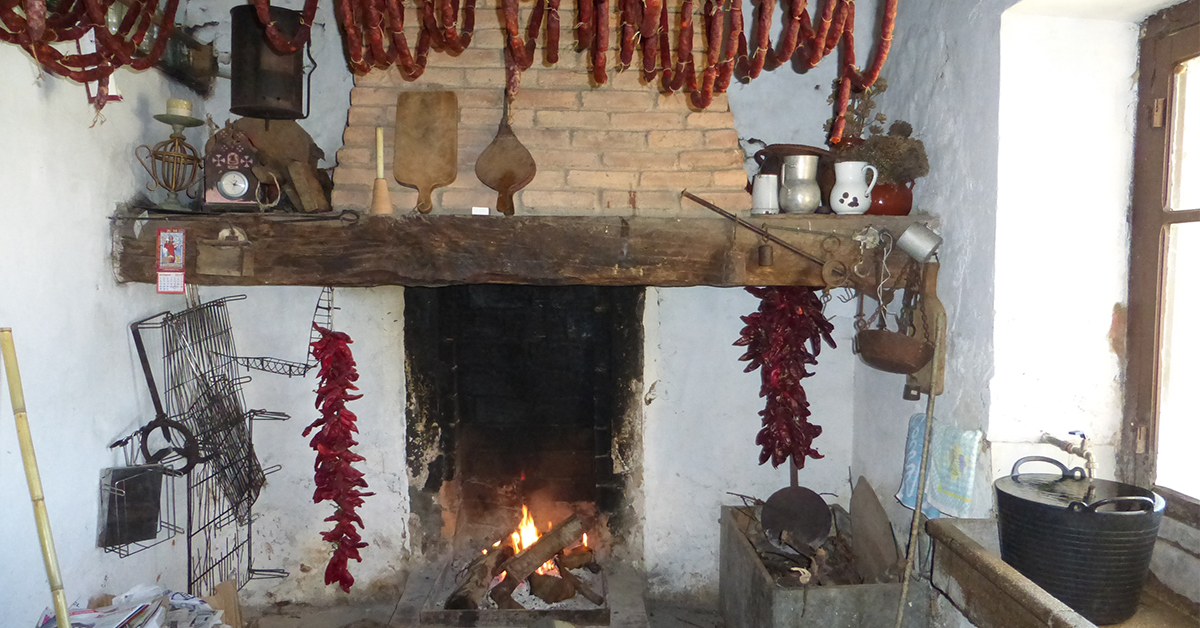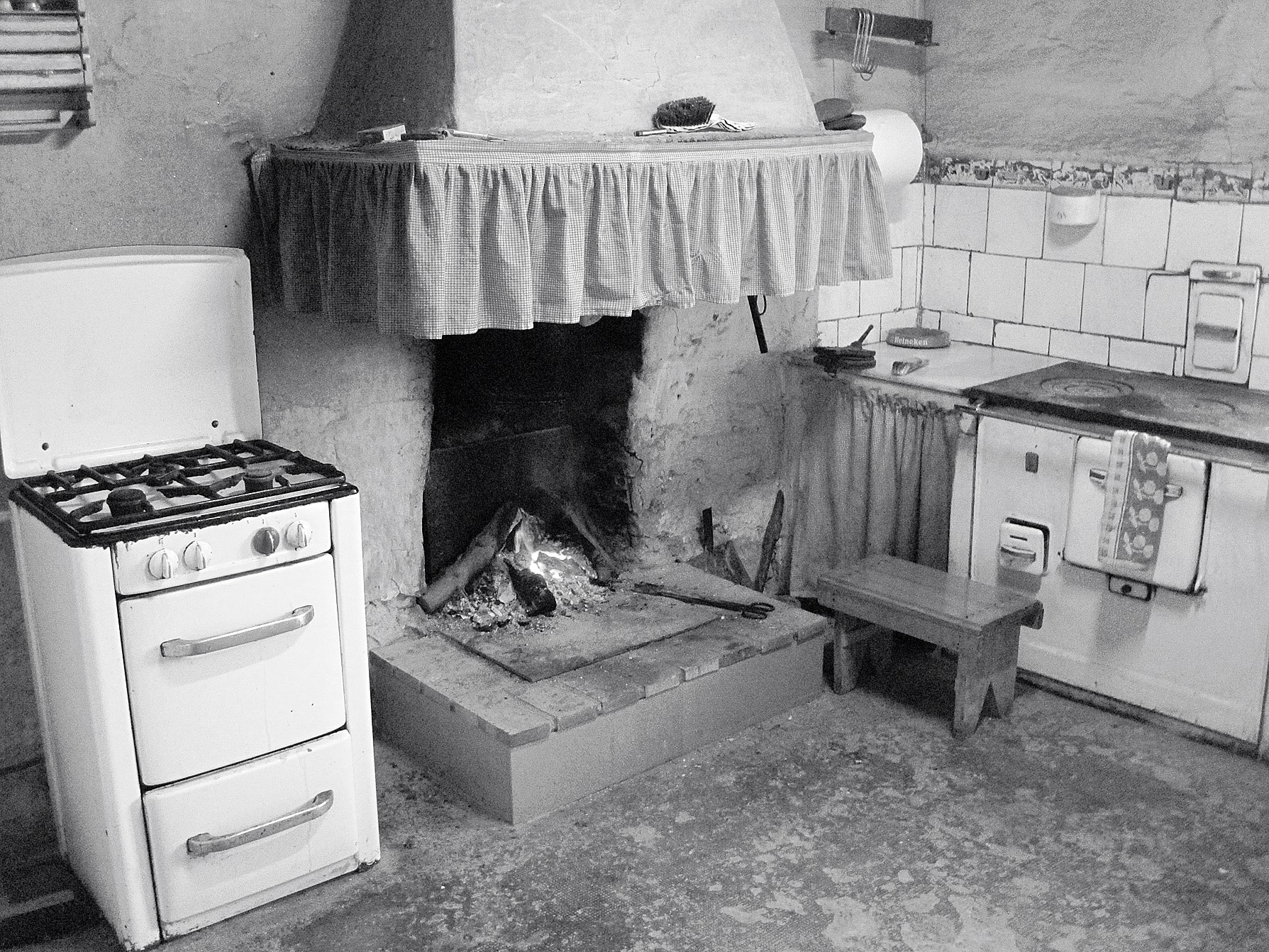Archives

Traditional fireplace. Larrabetzu (Bizkaia), 2014. Photo credit: Akaitze Kamiruaga. Labayru Fundazioa Photographic Archive.
The kitchen —ezkaratza, as we know it in Gernika and environs— used to be and still is the heart of any home, a lit fire being the essential life-giving element within it, where food was cooked, for folks and animals, and where heat radiated from. Around the domestic fire, family scenes were commonplace, countless old stories were told, and knowledge would be passed on from generation to generation.
To build a traditional fireplace (beheko sua), a three-sided frame made of chestnut wood or oak heartwood was needed. Two parallel pieces of timber were nailed to the wall, a third joined them, and all three were underpinned, to prevent collapse. The firebox was built with brick and mortar, as are partition walls. The hearth, however, was made of cast iron —since wrought iron would bend— and mounted on a raised floor. Usually decorated with either religious or profane engravings, such as the Tree of Gernika, the firewall (txapea) was also made of cast iron, and in some cases of sandstone.

Hearth, stove and butane gas cooker in a Muxika (Bizkaia) farmhouse. Segundo Oar-Arteta. Labayru Fundazioa Photographic Archive.
The structural components of the traditional house, roof, walls, doors and windows, served to protect the fire of the hearth. The fireplace was an integral part of the home, its central and most important feature. The idea of a house without a hearth, where the household sought shelter, was simply out of the question. The wind was nature’s most feared element. Strong winds were a great threat, for a spark from the hearth could spread to the wooden structure of the house and consume it. (more…)


